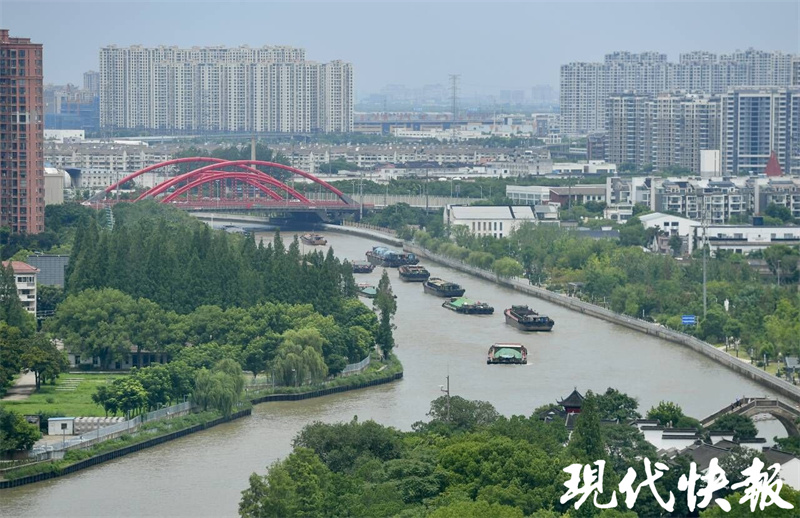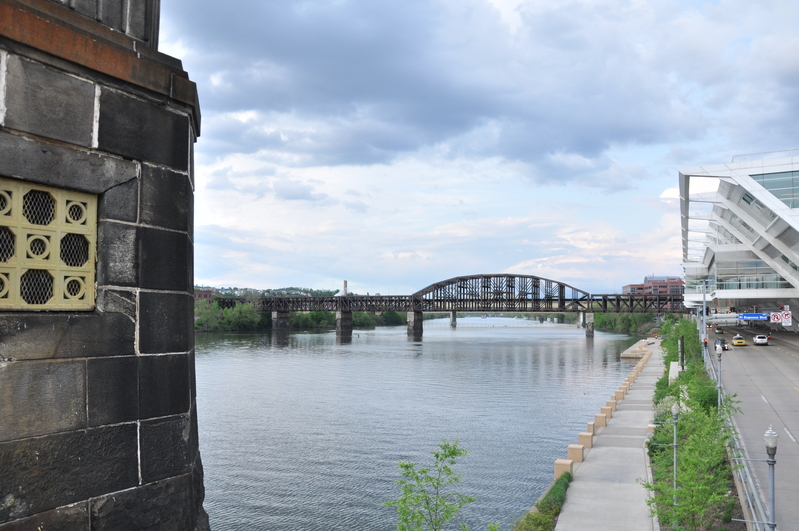Unexpectedly scattered with these Chinese elements, the emblem of the Danish royal palace | Rosenberg | Chinese elements
After the 17th century, global trade and cultural interactions have unfolded unprecedentedly, with sea routes connecting China and Denmark, two countries located at both ends of the Eurasian continent. Chinese elements have also begun to scatter in the Danish palace, embellishing Copenhagen, a Nordic city more than 8000 kilometers away from Shanghai.
At the end of June this year, I took a day out of my tight schedule to visit various scenic spots in Copenhagen. The first one I visited was the Rosenberg Palace in the city center. This prestigious palace was built by King Christian IV of Denmark in early 1606 and became a repository for royal treasures after 1710. The appearance of the palace has a strong Renaissance style, consisting of towering towers and red brick walls decorated with sandstone. Strolling through it, you will discover in a novel way that the magnificent and exquisite European decoration is occasionally mixed with elements of Chinese culture from the Ming and Qing dynasties.
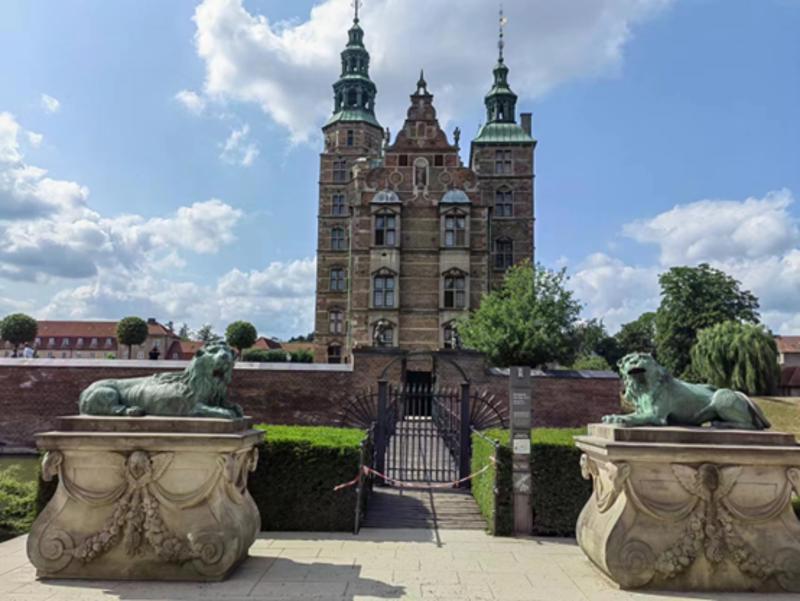
Appearance of Rosenberg Palace
In the 17th and 18th centuries after the completion of the Rosenberg Palace, it was a time when Chinese goods such as silk, tea, porcelain, and lacquerware flooded Europe and were highly sought after by the upper class, and the Danish royal family was no exception.
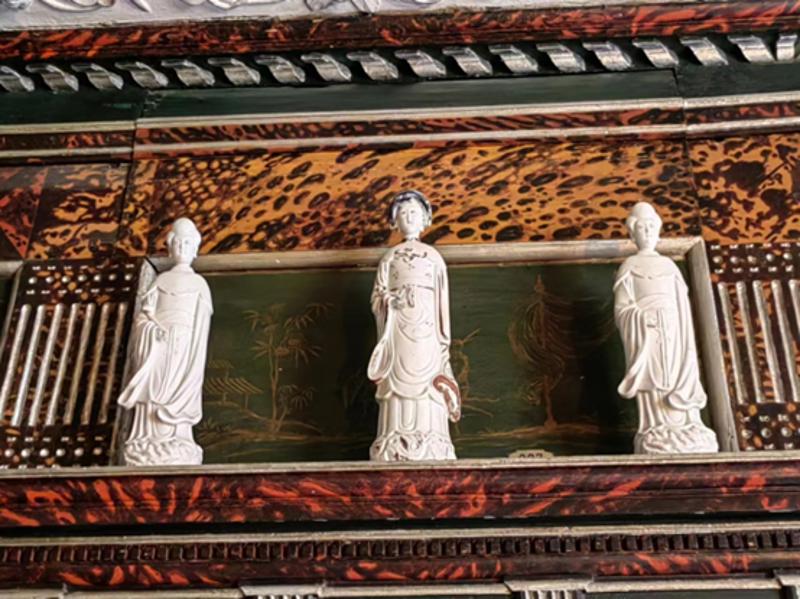
In 1675, the United Kingdom of Denmark Norway established trade relations with China and purchased Chinese goods through merchants from the Thirteen Factories in Guangzhou. In Christian IV's bedroom, several Chinese ceramic figures were placed opposite each other on the panels on both sides of the walls, which were decorations that appeared in the room during the reign of Danish Queen Charlotte Amalier. On one side, there are three porcelain statues depicting the image of Han Chinese ladies from the Ming and Qing dynasties, dressed elegantly, with cloud shouldered attire and delicate eyebrows and eyes. On the other side, there are five statues of Guanyin, with the middle one sitting cross legged on a mountain rock, embracing a child, which is a popular deity among Chinese people. The two Guanyin statues next to it stand on a lotus throne, and the two Guanyin statues sitting on the far side are slightly smaller. Next to them are two similar statues of Longnu and Shancai. These porcelain statues have a peaceful demeanor, beautiful clothing, smooth lines, and precise depictions of traditional Chinese ladies and Guanyin. They are like exquisite pieces of Ming and Qing Dynasty exported porcelain.
The ceramic statue of a Chinese lady in the Rosenberg Palace is adorned with "Chinese style" panels created by Dutch artists behind it
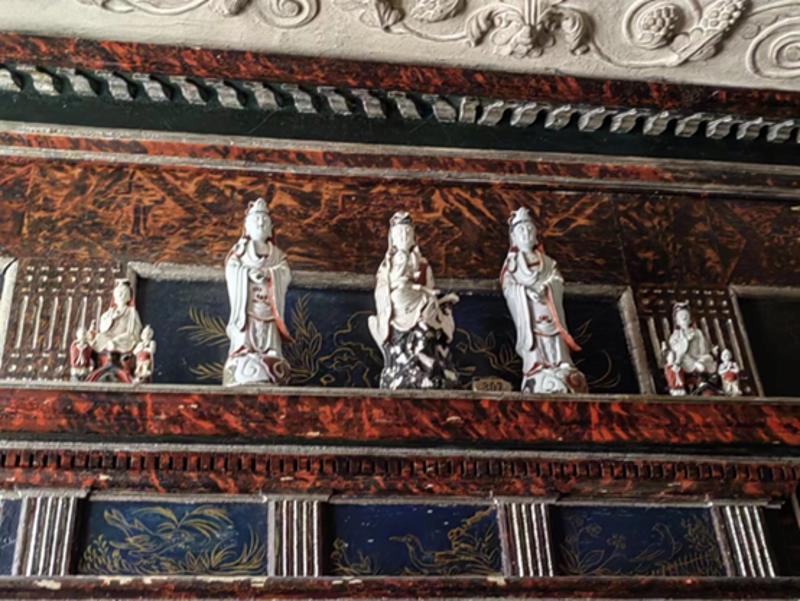
The Guanyin ceramic statue in the Rosenberg Palace is decorated with "Chinese style" panels around and behind it
There is also a blue and white porcelain plate in the Rosenberg Palace, with exquisite and complex craftsmanship. The plate is adorned with scattered birds and intertwined flowers, all revolving around a certain type of royal emblem. The Chinese porcelain that combines Chinese flower and bird patterns with European emblem patterns was the "emblem porcelain" specially customized for European customers at that time. It was popular among European royal families, nobles, and companies, with a small quantity but exquisite production, and much higher value than ordinary Chinese export porcelain. Most badge porcelain adopts the technique of overglaze enamel color, while the badge porcelain plates collected in the Rosenberg Palace are underglaze blue and white, which are relatively rare among badge porcelain.
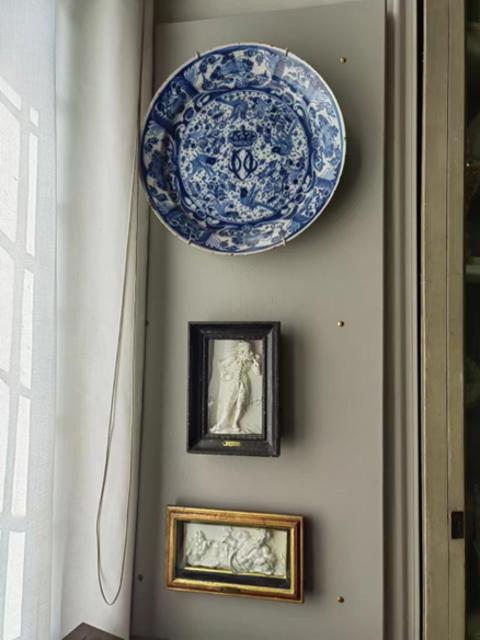
Emblem porcelain in the Rosenberg Palace
Due to the brilliant display of Chinese blue and white porcelain in Europe, a trend of imitating blue and white porcelain began to emerge in Europe in the 18th century. Under the influence of this trend, in addition to directly importing porcelain from China, there are also many European products with "Chinese elements" in the Rosenberg Palace. The underglaze blue color imitated from Chinese blue and white porcelain in the Netherlands and Denmark is one of the representatives.

There is a room called "Secret" on the ground floor of the palace, which is actually the toilet of Christian IV. The walls of this "secret" are covered with blue and white blue and white tiles, some of which already existed when King Frederick IV rebuilt the Rosenberg Palace in 1705, and were made and delivered by Dutch craftsmen; The other part was produced by a local factory in Copenhagen in 1736 and was first used to build the Hermitage Museum in St. Petersburg. It was later moved back to Rosenburg in the 19th century. The white background blue floral tiles imitated by Dutch craftsmen are adorned with flowers and plants around, with European landscapes and portraits in the center. The lines are rough and have a strong sense of wilderness; The blue and white tiles produced by the local factory in Copenhagen are mainly geometric patterns, with a more concise style.
The "Secret" of King Christian IV

The most distinctive "Chinese" feature of the Rosenberg Palace is the "Princess's Room", which was used by Princess Sophie Hedwig, the sister of Frederick IV, in the early 18th century. Although named the "Princess's Room", it was a secret meeting place for Danish kings to meet guests in the 17th century. During the period of 1663-1665, Frederick III ordered the placement of "Chinese style" lacquerware inlaid with turquoise and mother of pearl in the room, which made the entire room appear dimly lit but full of exotic atmosphere. The walls are also decorated with gold-plated wooden panels composed of various figures, flowers, and animal patterns, which were created by Dutch artist Francis de Bra based on European travelogues and Chinese novels. These patterns contain traditional Chinese themes such as plum blossoms, birds, and bamboo branches, and are likely directly derived from illustrations in Chinese books; There are also European "exotic imaginations" of China, such as the "Tatar" people with black long beards, warm hats, and bows and arrows on their backs, wild beasts with bloodthirsty mouths on rocks, resembling tigers rather than tigers, and even snake shaped exotic beasts with wings. After the 18th century, custom items from China and Japan were added to the rooms. Chairs, writing desks, and dressing tables were painted furniture tailored to British taste in Guangzhou around 1730. The coffee table was designed in the decorative style of Japanese lacquerware, and was also adorned with ceramic coffee pots and cups made by Oda in Japan with silver bases. It was also a custom-made product of the Danish royal family in the late 18th century.
The furnishings in "The Princess's Room"

In addition to these "Chinese" elements introduced, borrowed, or imagined in the Rosenberg Palace, various corners of the city of Copenhagen are also scattered with Chinese imprints from different periods. The Danish National Museum houses various folk customs and artistic works from the late Qing Dynasty in China, most of which were donated by Danes who had visited China. The personal collection of Swedish sinologist Xilongren is also an important source of these collections. In order to shape a complete "context" to comprehensively observe and showcase the local society, these ethnographic collections related to China are diverse and closely related to the daily life of late Qing China.
Portraits of Qing Dynasty literati collected in the Danish National Museum
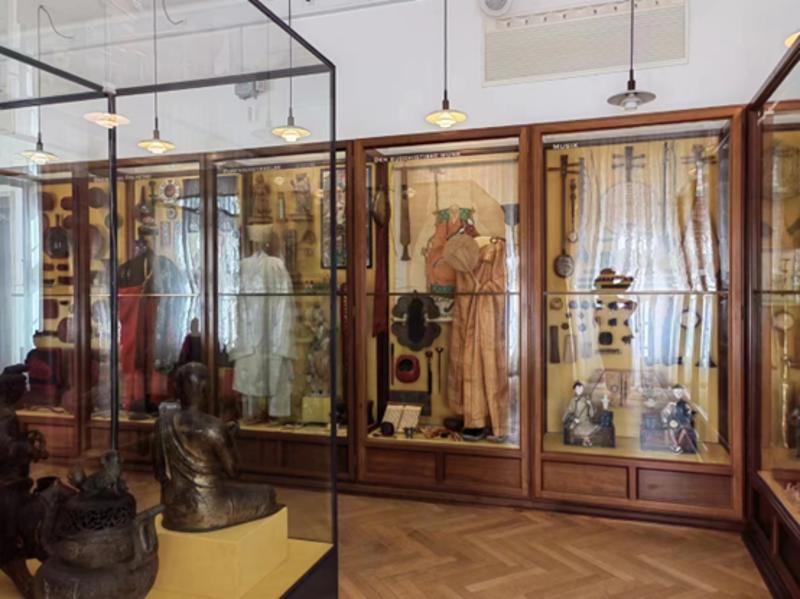
Chinese Taoist and Buddhist costumes and folk instruments collected in the Danish National Museum
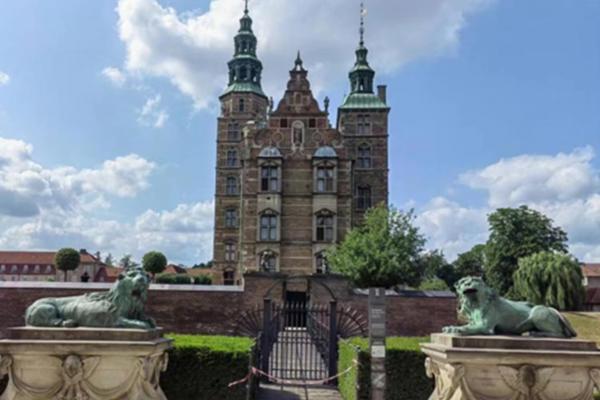
The famous themed amusement park in Copenhagen, Qufuli Park, was built in the mid-19th century and has a dedicated "China Zone". The buildings are mainly in Chinese style, demonstrating the strong curiosity and attention of Danes towards Chinese culture. There is a building called the "Chinese Tower" in the park. Although it was named the "Japanese Buddhist Pagoda" when it was built in 1900, it was called the "Chinese Tower" for the next 100 years, demonstrating the profound influence of Chinese culture.
In 2014, the Copenhagen Chinese Cultural Center was unveiled, becoming the first Chinese cultural center in the Nordic region. The center occasionally launches performances, exhibitions, and events introducing Chinese culture to witness the continuous cultural exchange between China and Denmark.
